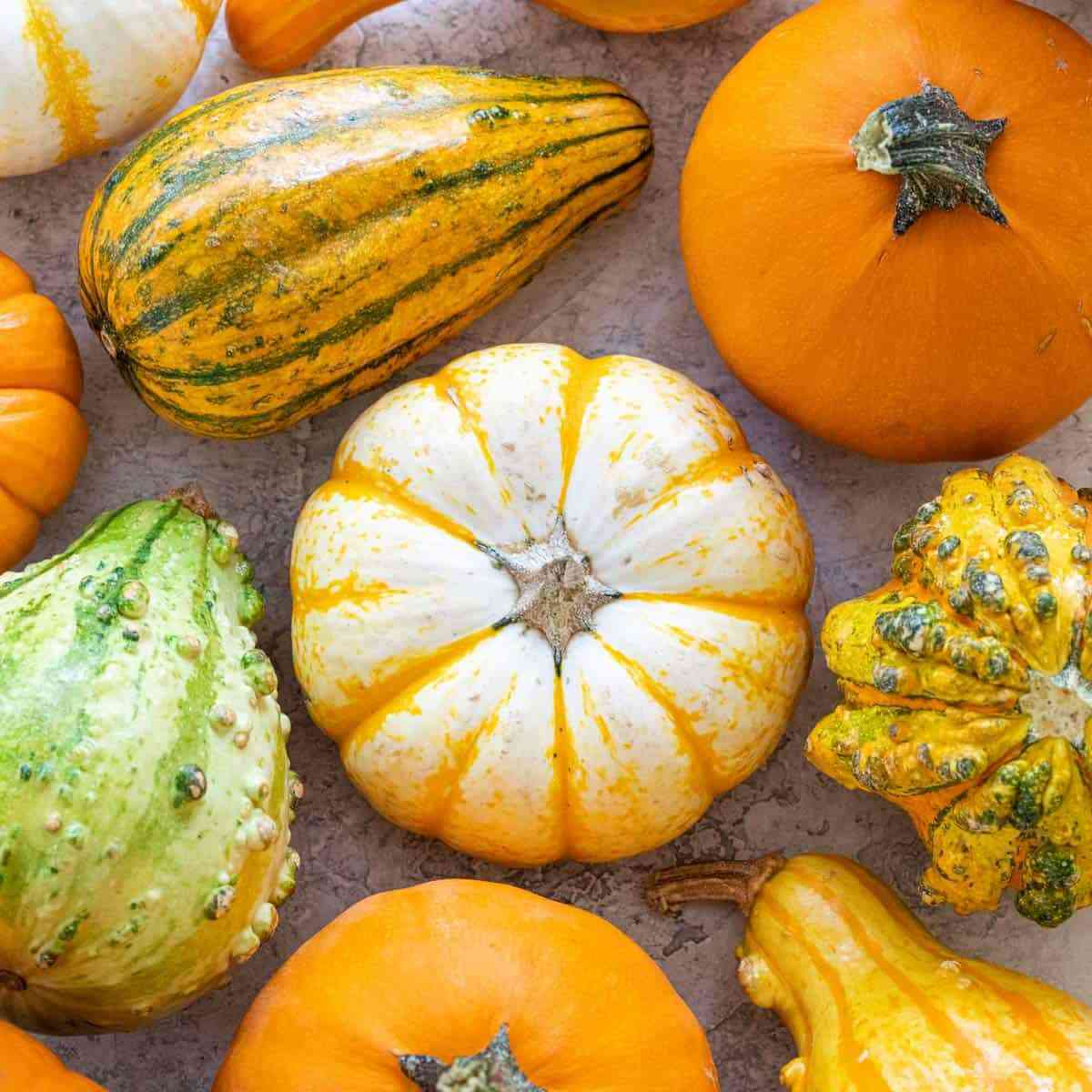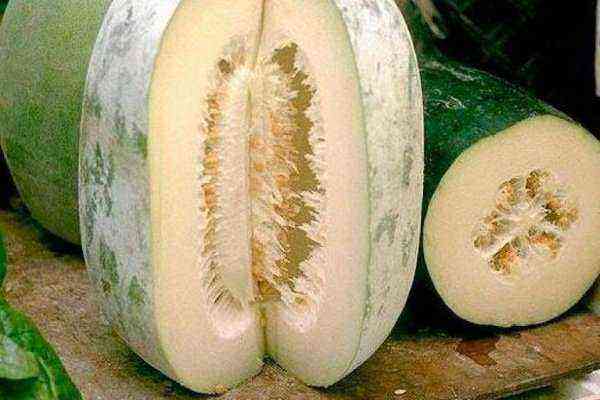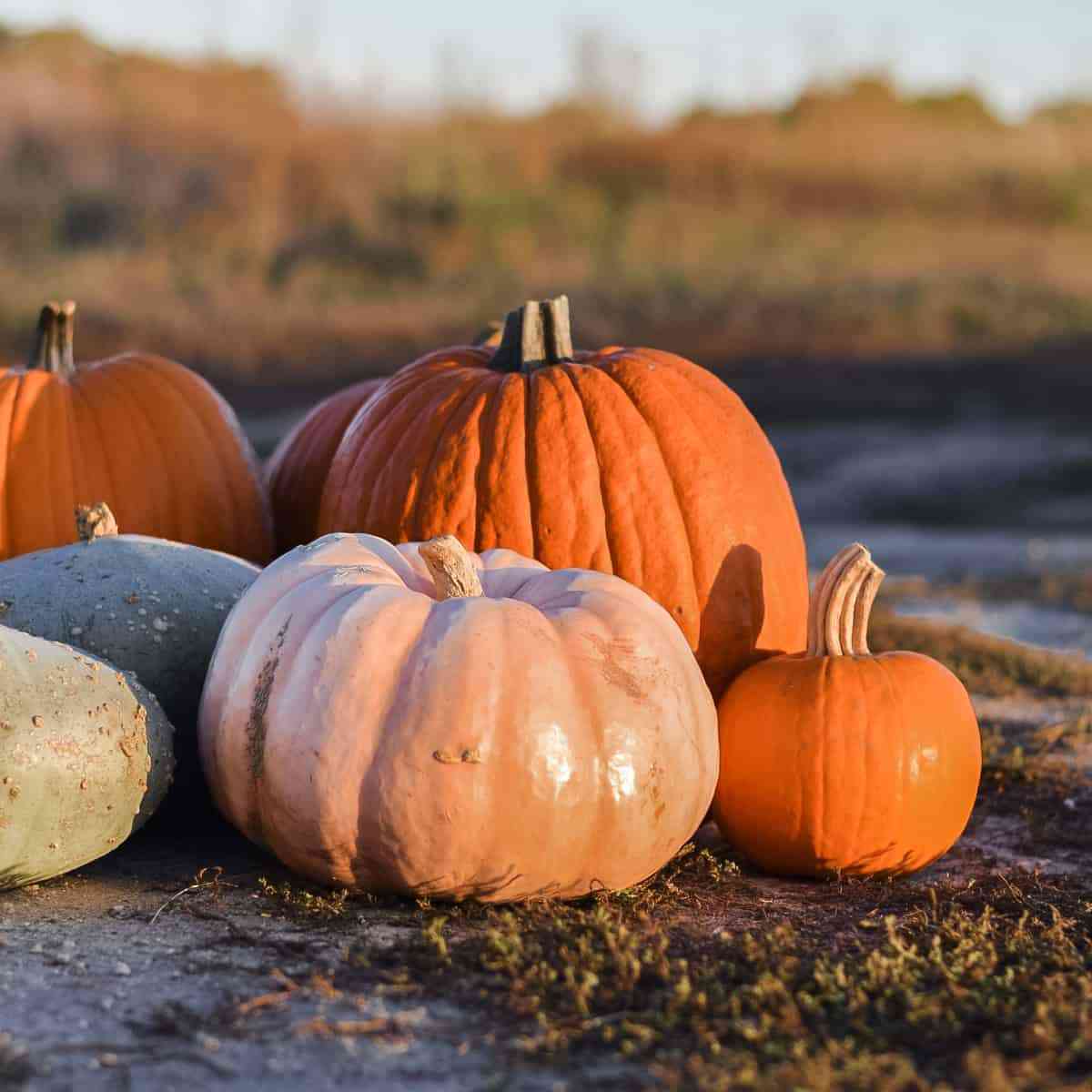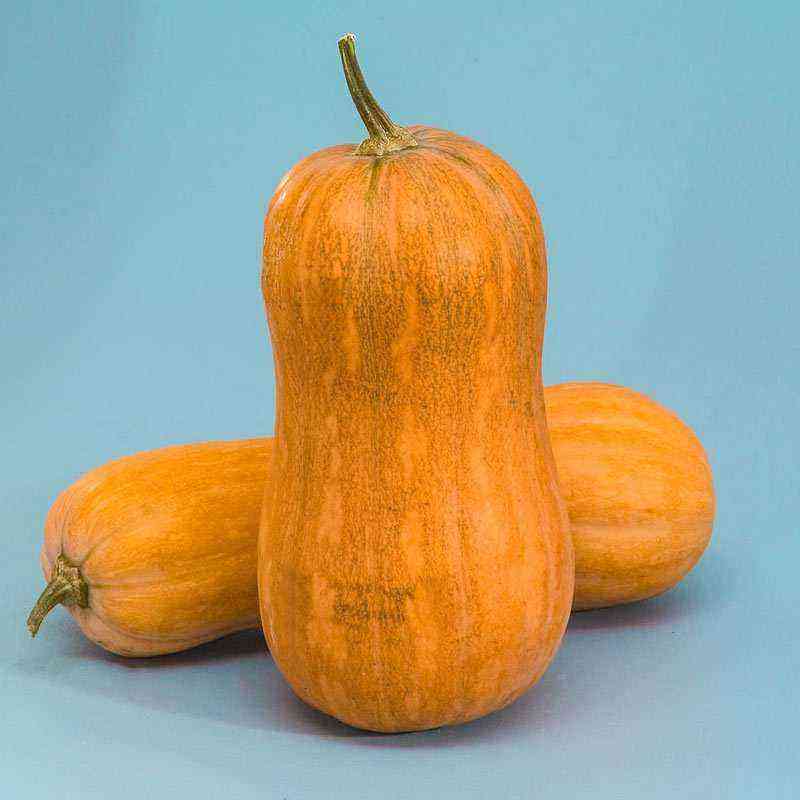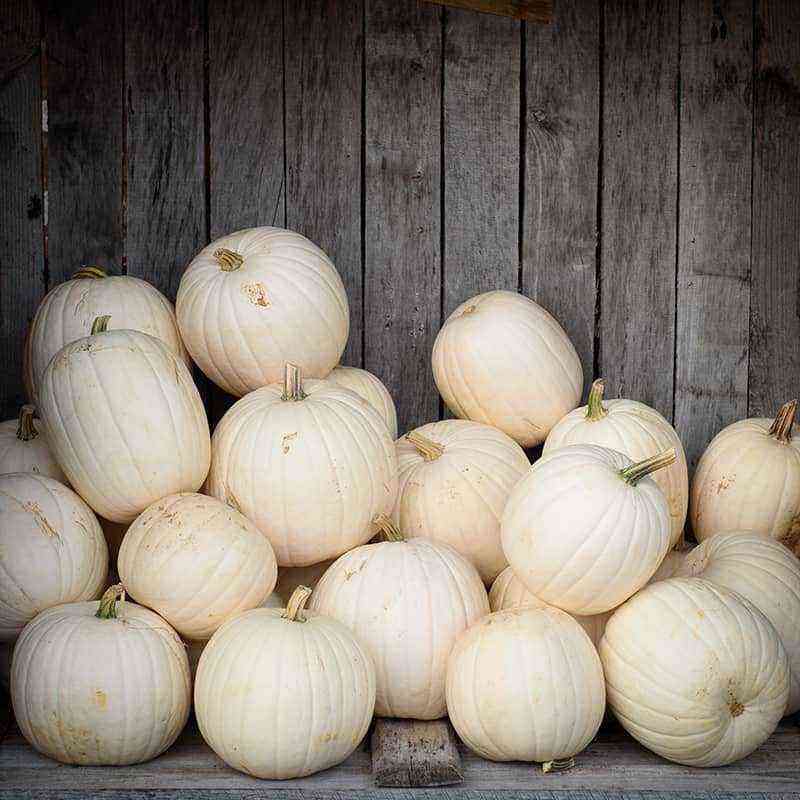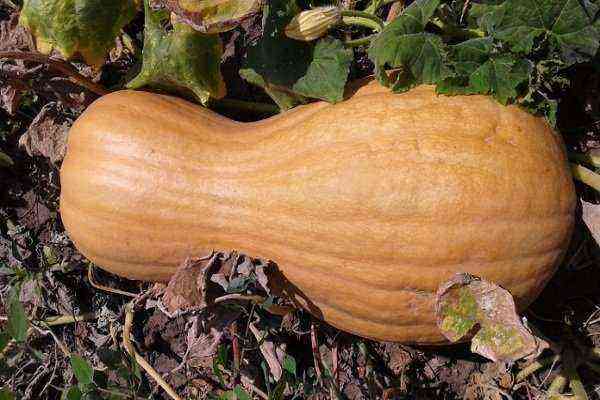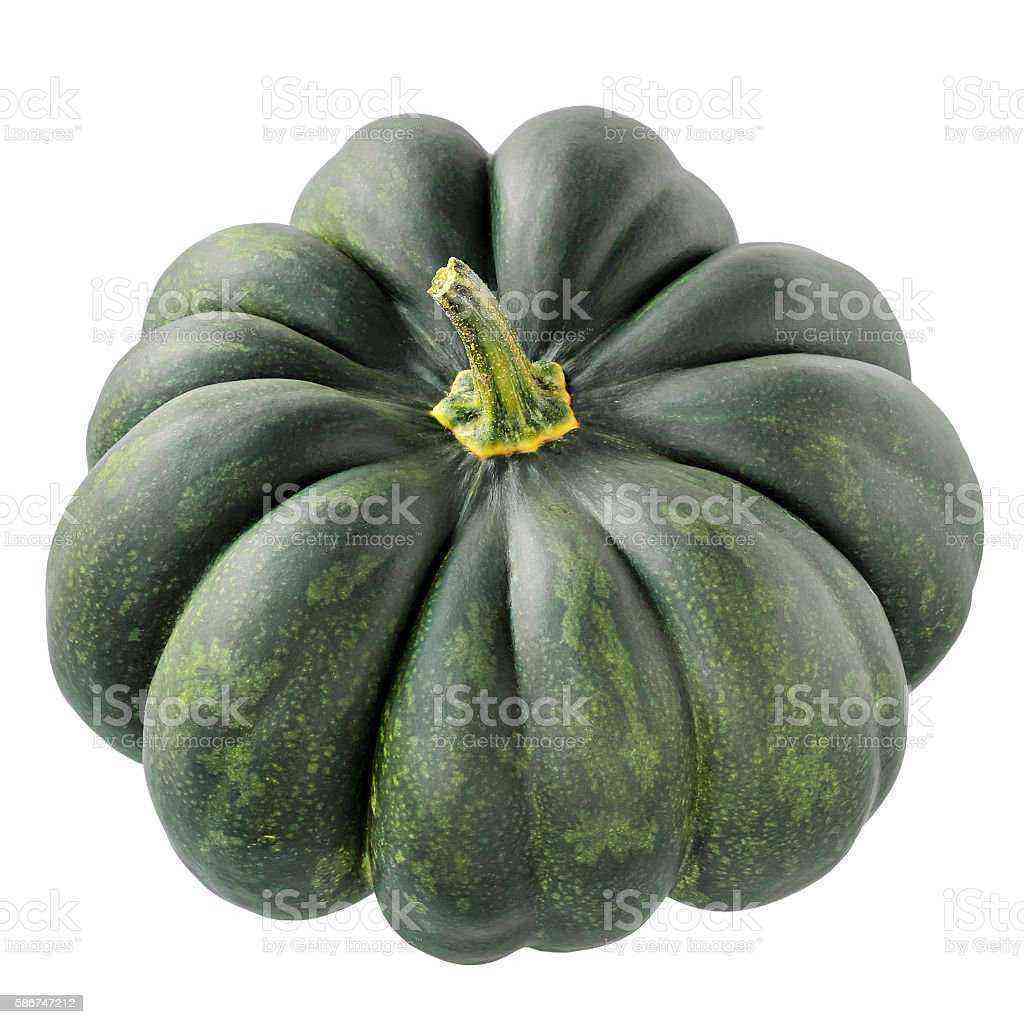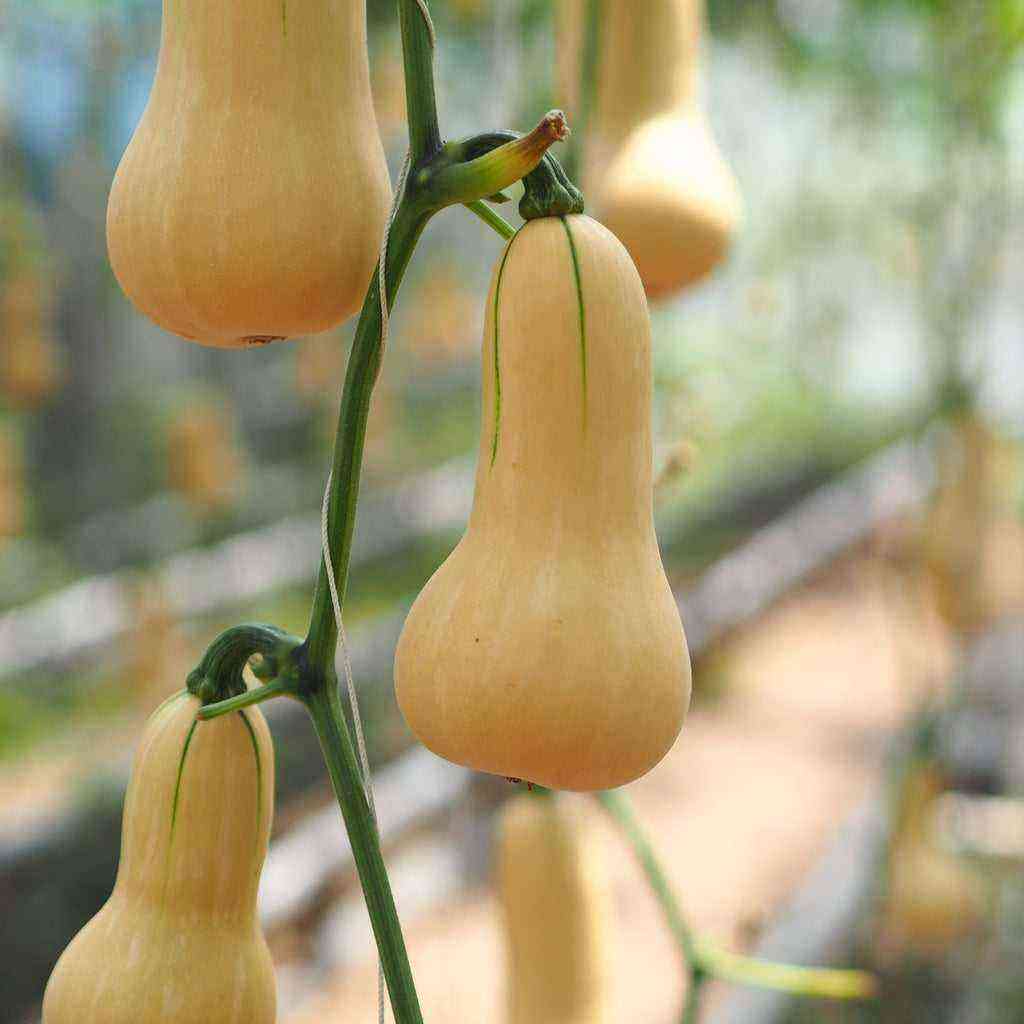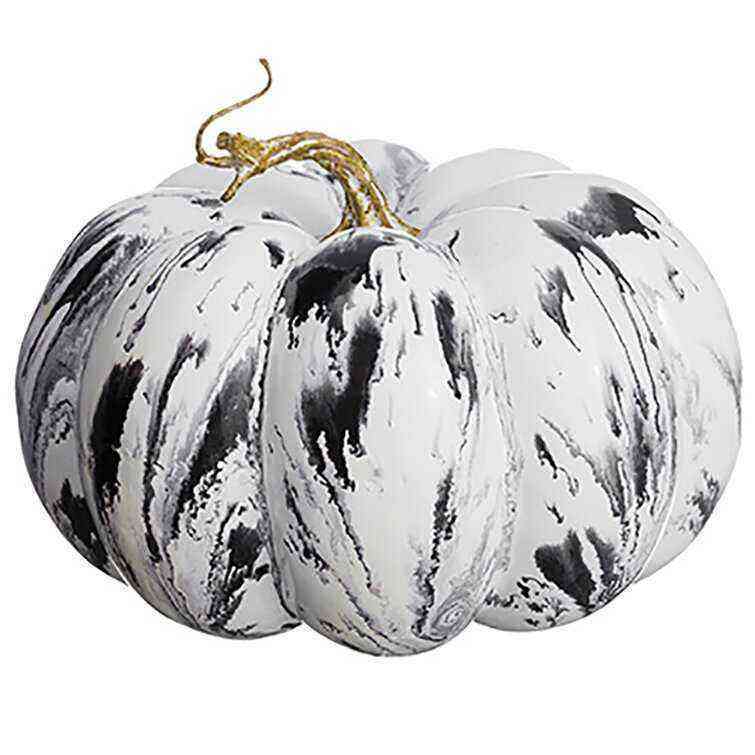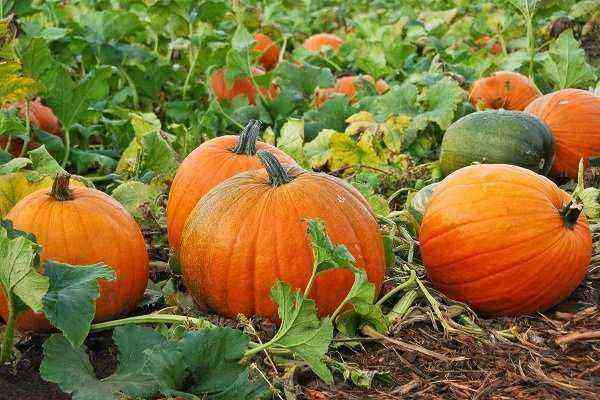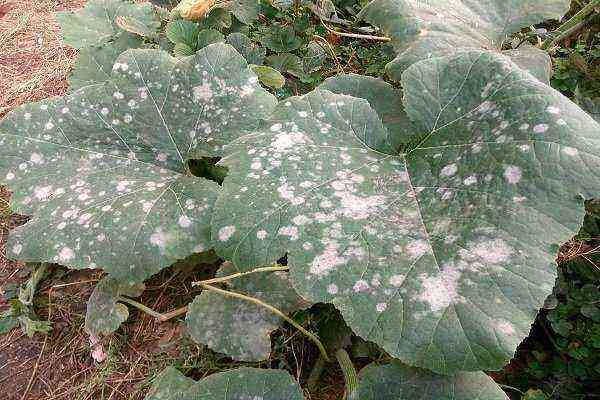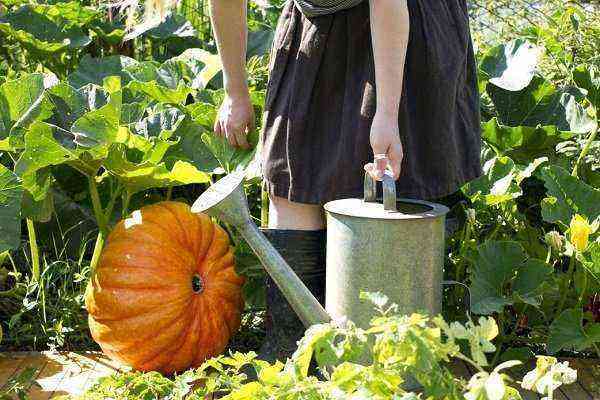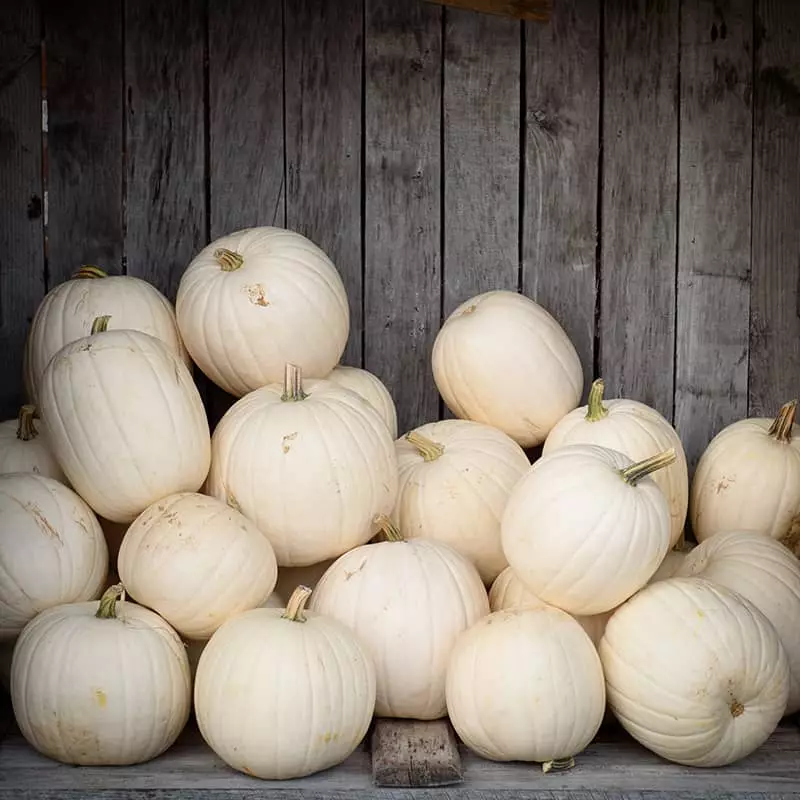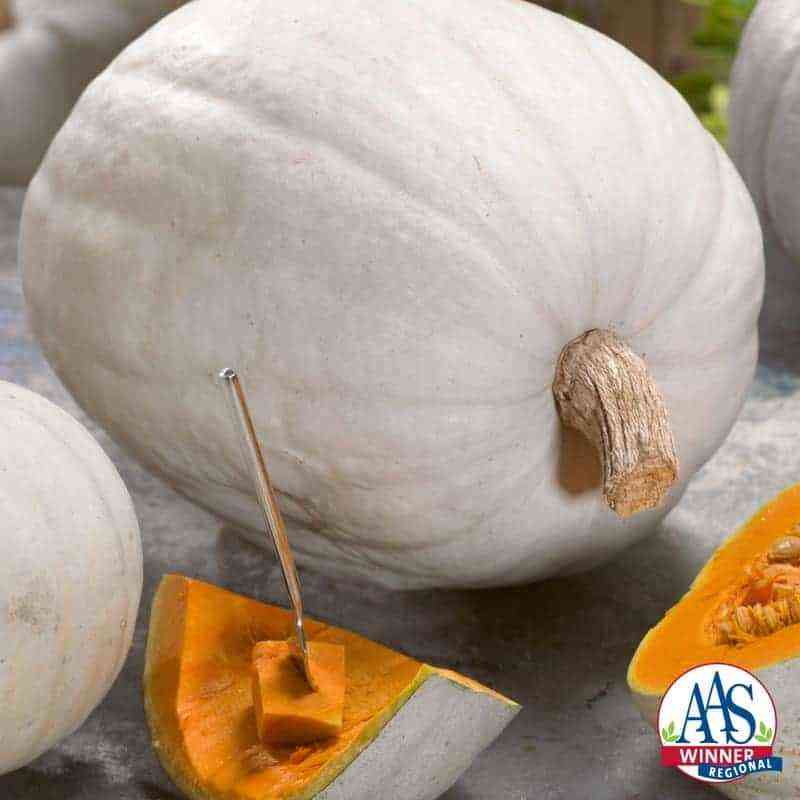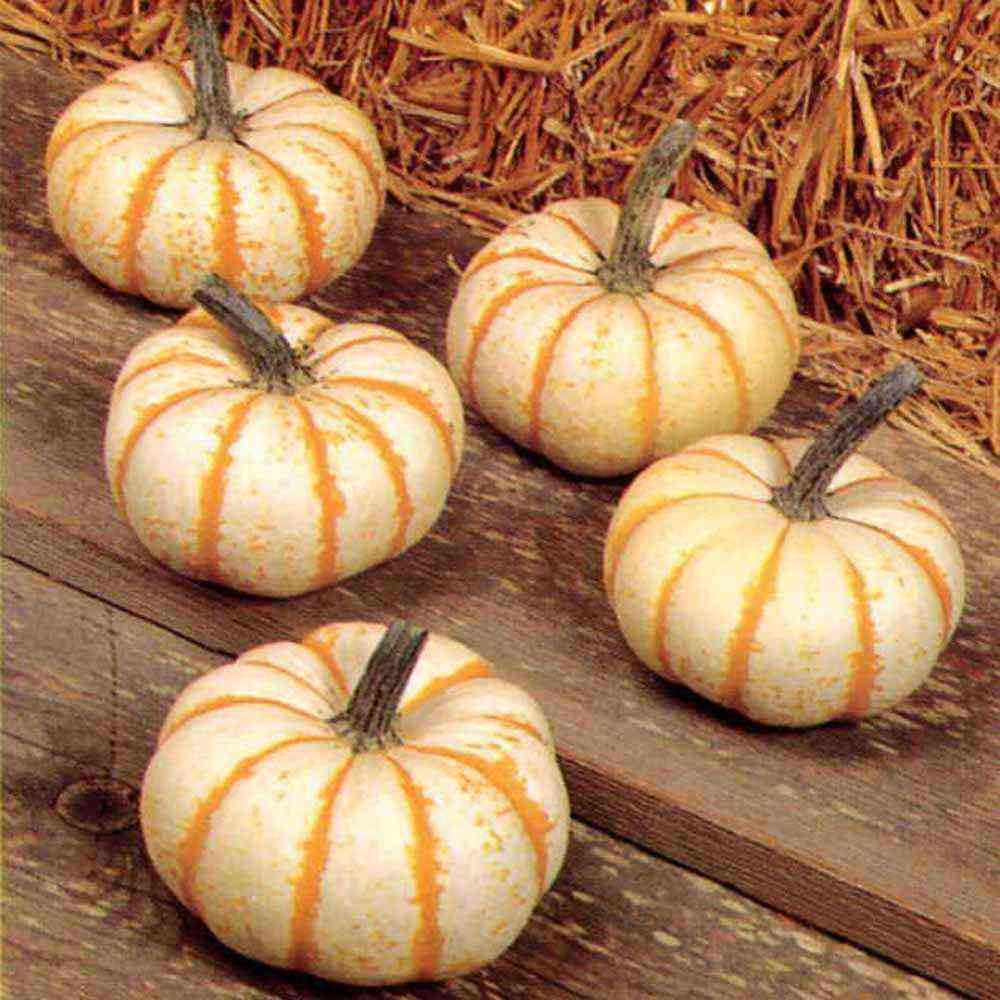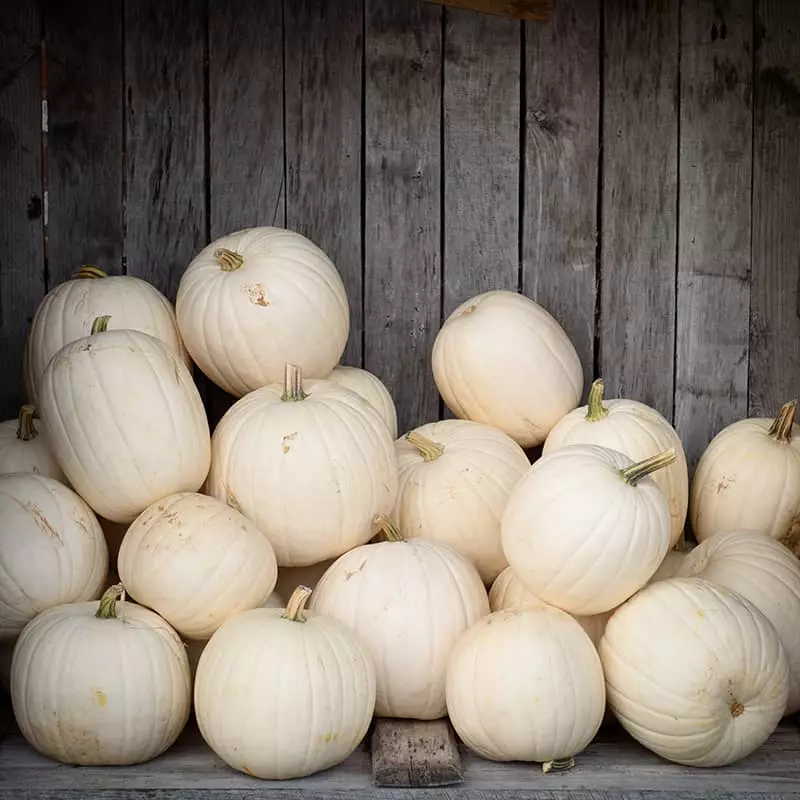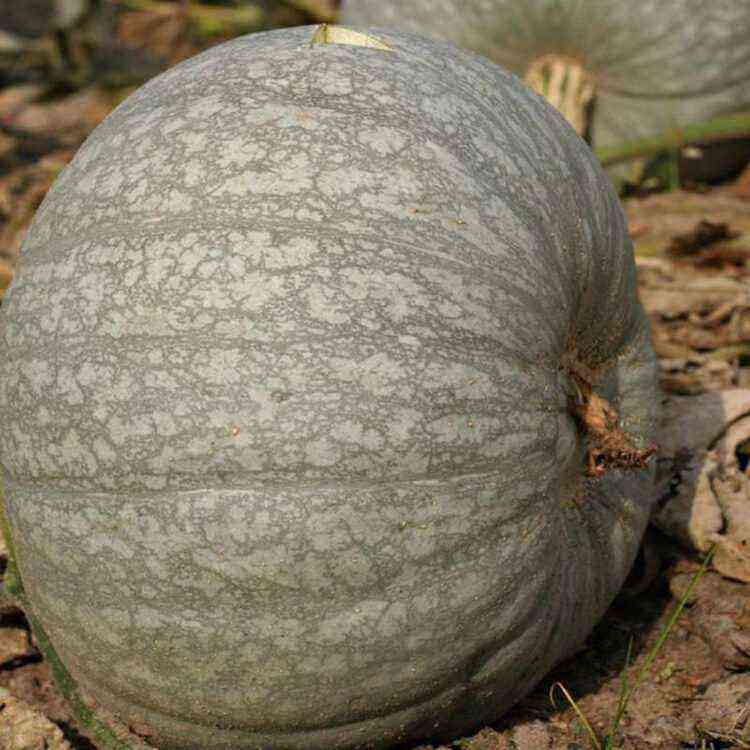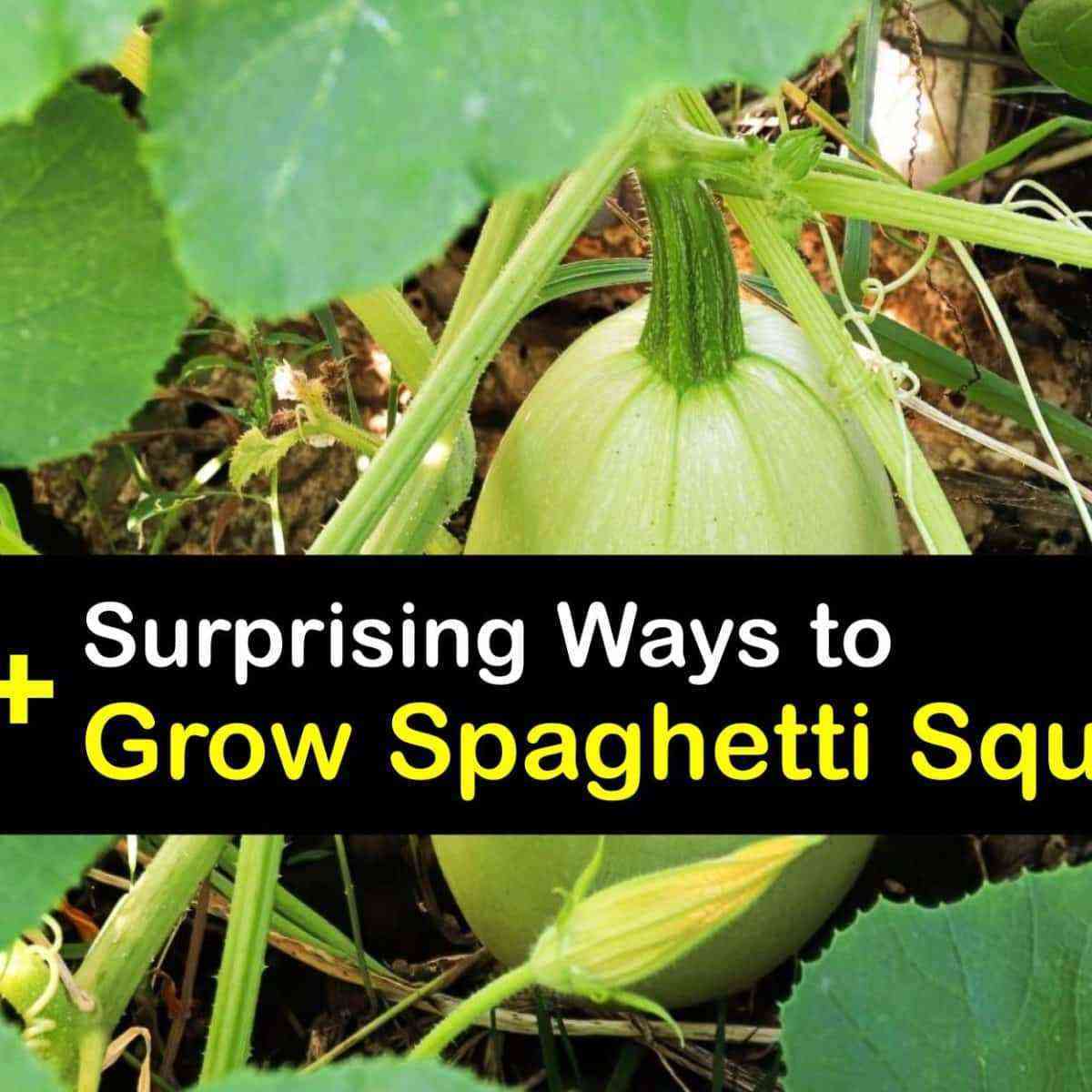The fruits of large-fruited pumpkin are valued for their good taste and a large amount of vitamins. To date, many varieties of culture are known. The largest representatives of the species can exceed 100 kg of weight, and the smallest ones do not grow to 1 kg. You will learn about the features of growing and caring for plants when reading this article.
Large-fruited pumpkin can reach up to 100 kg
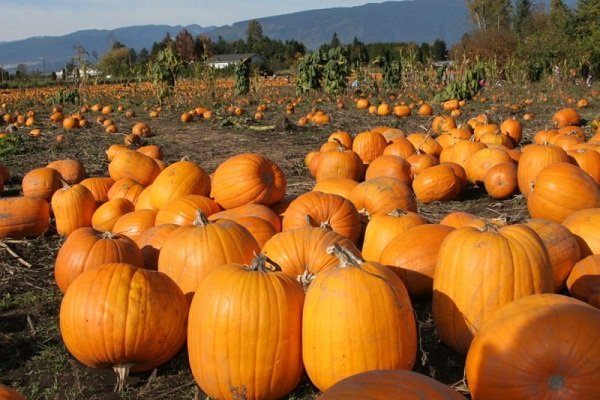
Large-fruited pumpkin
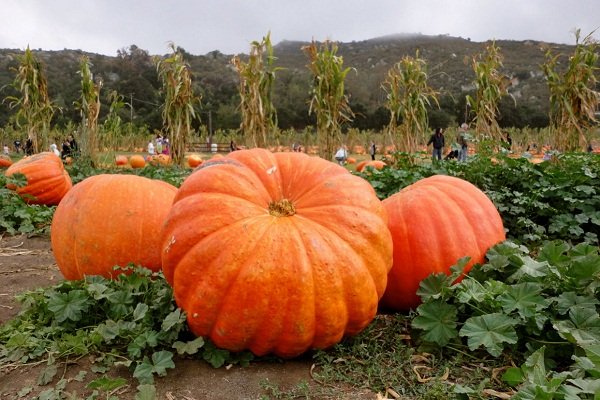
Large-fruited pumpkin has a very sweet taste
Description
Tropical America is considered the birthplace of large-fruited pumpkin. In Europe, it appeared only in the 16th century. Today this variety is popular all over the world.
Among the main parameters:
- The weight. Large-fruited pumpkin varieties are called, the weight of which can reach from 0,5 to 100 kg. On average – 50 kg.
- Bush. The leaves are large, dark green.
- Fruit. They can be round, elongated, oval. The color ranges from white to bright orange or greenish. Inside the seeds are milky or brownish in color.
- Taste. Usually not very sweet, but some varieties are superior in sugar content to watermelons.
- Benefit. The fruits of large-fruited pumpkin are often used for medicinal purposes. They have laxative and diuretic effects. They also contain a large amount of vitamins.
- Ripening dates. Most varieties ripen within 80-140 days after planting.
- Storage. Such fruits have a strong fleshy skin, making them suitable for long-term storage and transportation over long distances. They are valued for their resistance to low temperatures and unpretentious care.
Peculiarities of growing
There are several basic features to consider when growing pumpkins.
Seed preparation
Before landing, preparation is necessary:
- Sort. Go through the seeds, choose only the largest. Remove damaged and empty ones.
- Heating. Lay out the selected material in a layer of no more than 10 cm. Heat for about 5 hours at a temperature of 40 degrees.
- Soak. Mix 1 liter of water with 2 tbsp. l. ash. Throw seeds there and wait 10 hours.
Gardeners recommend removing the seeds in a cool place for an additional few hours.
You can avoid the described procedures if you take seeds that have lain 2-3 years after harvest.
To prepare for landing they need:
- lower into water at a temperature of 40 degrees for 3-4 hours;
- wrap in a damp cloth and leave for 2-3 days, constantly monitoring the level of moisture.
All these manipulations are necessary for 2 reasons:
- Growth stimulation. Sprouted seeds sprout faster.
- Protection. They become more resistant to pests.
Selecting a landing site
When choosing a place in the garden, you need to consider the following features:
- Location. It is better to grow a pumpkin in an area open to sunlight and protected from the wind. A great location is the south side of the house.
- The presence of support. Most varieties are prone to weaving. Therefore, you should take care of the support in the form of a wall or fence.
- Correct soil. The soil should be nutritious and loose, because pumpkin does not grow well in acidic soil.
Since autumn, the earth needs to be dug up, fertilizers must be added. You will need compost and superphosphate. For 1 sq. m, 4 kg of compost and 30 g of superphosphate are added. Lime will help reduce soil acidity.
- Precursor cultures. It is better to plant after tomatoes, legumes or carrots.
Landing on a bed where cucumbers used to grow is not recommended.
- Neighborhood. Pumpkin grows well next to beans and corn.
Planting seeds
Large-fruited pumpkin seeds can be planted in two ways.
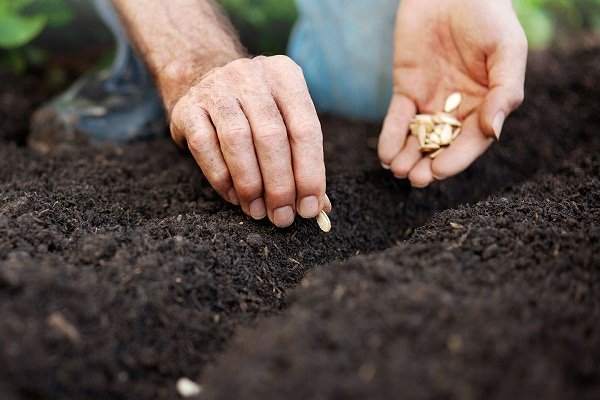
In the open ground
This is usually done in April. Care must be taken that the distance between plants is at least 1 m. Dig a hole 3 cm deep and plant 2-3 seeds there.
Sowing seeds in open ground is more suitable for residents of the southern regions.
Seedling
The procedure is carried out 20 days before landing in the ground.
There are several stages of planting seedlings:
- Soil preparation. It should consist of peat and sand. Before and after planting, the soil is moistened.
- Capacity. Pots are better to take separate. Ideally, they should be from peat, so as not to damage the roots during transplantation. If they are made of plastic, it is better to line the bottom with a layer of sawdust.
- Disembarkation. For seedlings, seeds should be planted 2 per 1 container. Depth – 2 cm.
- Temperature. Within 1 week after planting seeds for seedlings, you need to maintain a temperature of about 25 degrees, then reduce it to 18.
- Care. Feed after 2 weeks. Mullein mixed with water in a ratio of 1 to 10 is suitable.
Planting seedlings
If the seedling is ready for planting, it meets the following characteristics:
- Stem. Thick and strong enough.
- Leaves. At least 3-4 strong leaves for each plant.
Rules:
- before planting, the ground in the garden should be poured with hot water;
- a scheme is used, as when sowing seeds, only the holes are dug to such a depth that a plant root or a peat pot is placed in them;
- if the seedlings grew in peat pots, you do not need to take them out, just slightly reduce the volume of the bottom and walls;
- seedlings should be deepened into the ground to the cotyledons and watered again;
- to provide protection, the seedlings are covered with a film.
Shrub formation
When forming bushes, follow the recommendations:
- pumpkin is formed in the form of a single stem;
- to avoid growth, even before the appearance of inflorescences, the upper bud is pinched;
- extra shoots should be removed as soon as they reach 7 cm;
- ovaries leave no more than 3.
Proper formation will help direct all the forces of the bush to the growth of fruits, and not shoots.
Care
The rules of care require special attention.
Watering
It is necessary to water the pumpkin often, especially during the period of flowering and fruit formation, when the plant needs more vitality and it consumes water more intensively.
Irrigation features:
- the optimum water temperature is 20 degrees;
- 1 adult plant needs about 1 bucket of water;
- if you pour cold water on a pumpkin, it may die;
- in the heat, water the plant every other day;
- Soil moisture levels need to be constantly monitored.
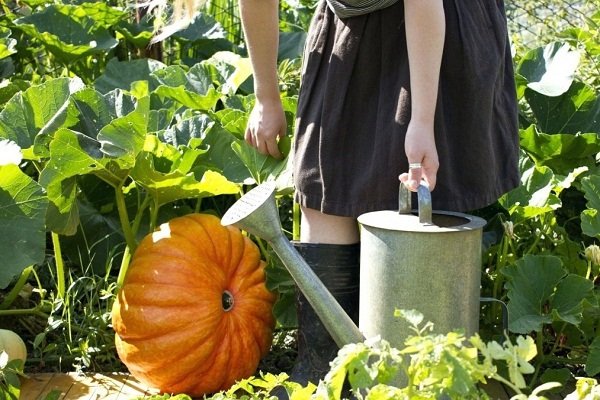
Additional fertilizing
Fertilizers should be applied immediately after loosening the soil.
Should be considered:
- Growth rate. If the plant is growing slowly, nitrogen can be added to the soil already 20 days after planting. Phosphate and potassium are needed for better fruit formation.
- The weather. In rainy weather, feed the pumpkin with dry fertilizers, in dry weather, on the contrary, with liquid fertilizers.
- Time. During the growth period, top dressing is applied:
- 1st – carried out as soon as the 5th sheet has been formed. Apply mineral or organic fertilizers.
- 2nd – after the formation of the ovaries. Superphosphate or ash will do. Ashes need 300 g for every 1 sq. m.
Powder
This is another way to improve the growth and development of pumpkins. When the lashes of the plant reach 1 m, carefully unravel them and place them in one direction. Then sprinkle the lashes with earth every 1-30 cm. This will help protect the stems from strong gusts of wind and provide additional nutrition.
Pollination
Pumpkin, like any other flowering plant, is pollinated by bees. But if insects rarely fly to the site, you can carry out the procedure yourself. For this you should:
- pick a “male” flower;
- remove all petals from it;
- for a few seconds, attach to the “female”.
It is recommended to carry out the procedure in the morning, at the time of opening the flowers.
Protection against diseases and pests
Among the insects that can be dangerous for large-fruited pumpkins:
- Melon horn. It affects leaves and ovaries, causing them to curl and rot. Insects have an oval-shaped body of a yellowish or greenish color.
To get rid of them, you need to pay special attention to the cleaning of weeds. Additionally, you can spray the pumpkin with a mild soapy solution.
- Spider mites. Insects suck the juice from the pumpkin leaves, making them lethargic, and then weave them in cobwebs. This leads to the complete withering of the plant.
Spraying with onion or garlic tinctures will help to cope with ticks.
- Woodlice. They attack plants from the bottom.
Constant monitoring of the level of moisture will help prevent the appearance.
- Springtails. They damage the leaves by gnawing holes in them.
Timely loosening will help against pests.
It is also necessary to control the following diseases:
- Root rot. It is a fungal disease that leads to the death of the root system, stunting of the plant and its wilting.
To avoid the development of the disease, you need to control the quantity and quality of water, observe the optimal frequency of feeding.
- Anthracnose. The plant is covered with brownish spots, starting from the leaves. Over time, they begin to rot and crumble.
Timely removal of diseased plants will help to avoid the spread of the disease.
- Olive blotch. Water spots appear on the surface of the bush, which quickly increase in size. This leads to the death of the ovaries and a change in the shape of the fruit.
It can be prevented by spraying the plant with Bordeaux mixture.
- Powdery mildew. First, small light spots appear on the surface of the leaves, which gradually merge into one. The result of the development of the disease is the death of the leaves. The spores of the fungus may be present in the soil or carried by the wind.
For warning, you need to pay attention to soil preparation and spray the plant with hay tincture.
- Mosaic. The leaves are spotted from white to greenish.
Insects can be carriers of the virus, so you need to take care of protecting the pumpkin with insecticides.
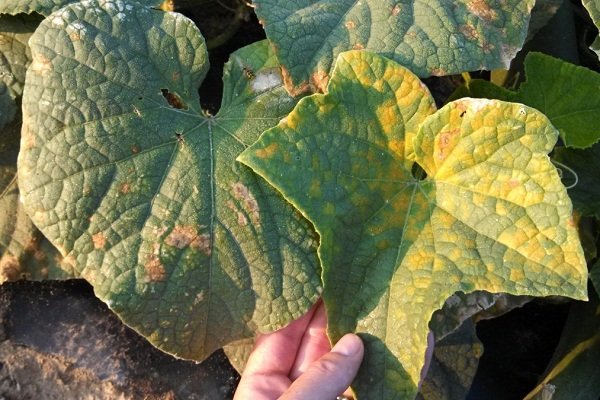
Additional tips
To protect the fruit from damage will help recommendations:
- For hanging fruits. If pumpkin lashes climb up the fence, it is quite natural that the fruits that appear on them will hang above the ground. Given the large size, this can damage the stems and cause the pumpkins to fall. Therefore, it is better to play it safe and place them in strong mesh bags, securing them on the fence until they ripen.
- For lying fruits. Pumpkins lying on the ground, especially during periods of high humidity, are vulnerable to rot and insect attacks. You can avoid problems if you put a board or a sheet of plywood under the fruit.
Harvesting and storage of crops
Fruit should be removed from the garden before frost occurs. It is best to do this on a dry, sunny day, but if the weather is rainy, the pumpkin should be kept under a canopy to dry before being put into storage.
At the same time, they adhere to the rules:
- The fruits are cut carefully with sharp scissors or a knife. You don’t have to pick pumpkins. In this case, 3-5 cm should remain from the stem.
- It is recommended to collect pumpkins when they are ripe. Such fruits have a thick skin, which does not leave dents when pressed.
- If the pumpkin did not have time to ripen, and frosts have already come, you can keep it in storage until conditions improve, and then take it outside for 20 days and leave it under the rays of the warm sun.
- The crop is stored in a cool, dry place. Subject to all conditions, it will be possible to enjoy the fruits all winter.
Top Grades
There are several of the most popular varieties of large-fruited pumpkin.
Titanium
Among the characteristics of the variety:
- The size. One of the largest representatives of the described species. The average weight of 1 fruit is 100 kg, but under good conditions, more can be grown.
- Bush. Titan develops long, spreading lashes, so plants are usually planted at a distance of 2 m from each other.
- Ripening dates. Ripens, on average, within 140 days.
- Fruit. The shape is rounded, with several segments. The skin is usually orange.
- Pulp. It is slightly darker in color than the shell. There are few seeds inside. The taste is pleasant, but fresh. Therefore, the variety is usually grown by those who want to get really large fruits.
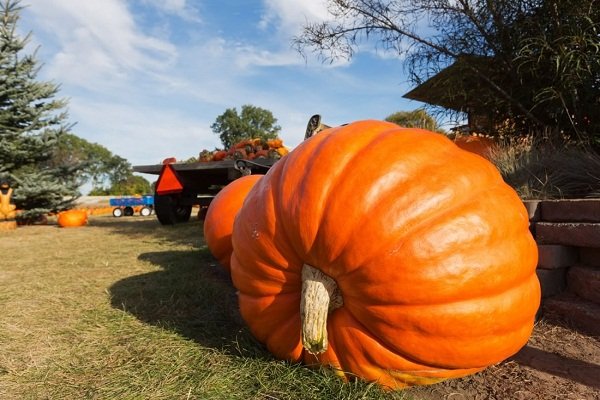
Zorka
Options:
- The size. Fruit weight usually does not exceed 7 kg.
- Ripening dates. You can get a harvest already 110 days after germination.
- Fruit. They have a rounded, slightly flattened shape with a segmented surface. The skin is decorated with a pattern of dark and orange stripes.
- Pulp. Bright orange color. It has a good density, but not particularly juicy. However, this does not affect the good palatability. It has a large amount of vitamins.
- Productivity. Has a good yield. Subject to the growing conditions, you can collect 300 centners of pumpkin from 1 hectare.
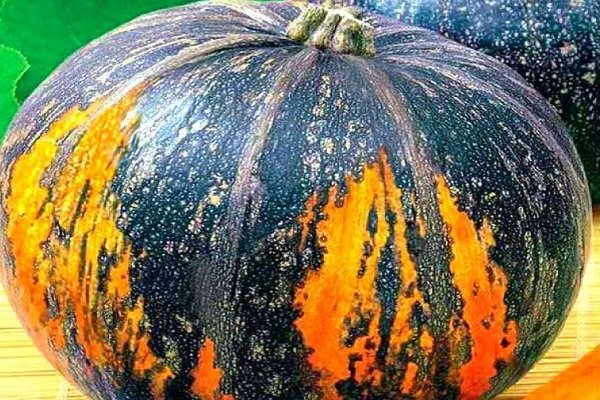
Baby
Description of the variety:
- The size. It can weigh only 3 kg, but this does not make the pumpkin the smallest representative of its kind.
- Bush. Small, with neat leaves.
- Maturing period. Reaches maturity quickly – already 80 days after planting.
- Fruit. Flattened shape. The color of the skin is gray with a hint of brown.
- Pulp. Orange. It has excellent taste characteristics – crispy and sweet, contains a large amount of carotene.
- Productivity. Very small. From 1 sq. m. you can collect only 3,5 kg of pumpkin.
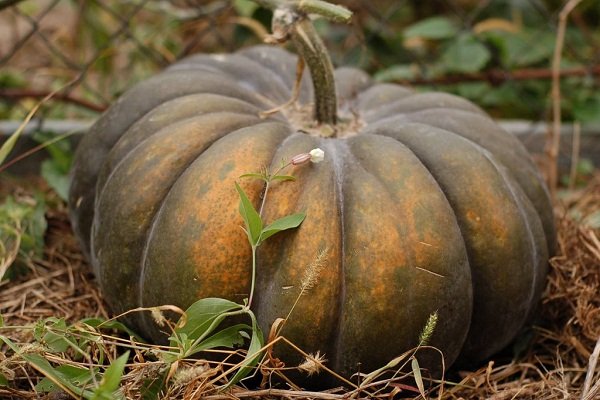
Parisian gold
Features:
- The size. Pumpkins can reach 15-20 kg of weight, but the average characteristic is 10 kg.
- Bush. Grows on large, spreading bushes with long lashes.
- Maturing period. You can get a harvest already 115 days after germination.
- Fruit. The shape is rounded, flattened, segmented.
- Pulp. Yellowish-orange, dense, sweetish. Its taste does not deteriorate, but only improves with prolonged storage.
- Taste qualities. The nutritional value of the fruit is quite high. From them you can make juices, mashed potatoes, cook and bake.
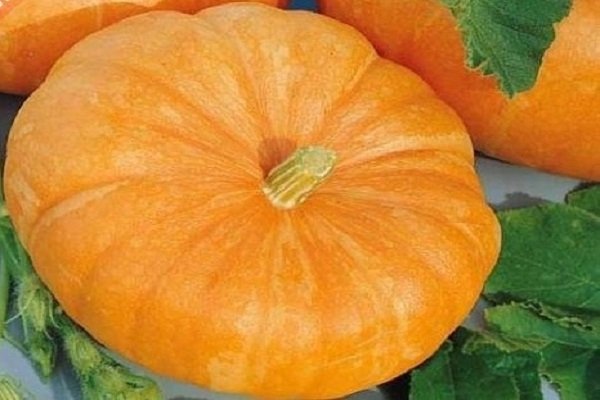
Sweetie
What is remarkable about the variety:
- The size. Compared to other representatives of the variety, the pumpkin is small. It weighs only 2,5 kg.
- Bush. It has many long lashes. The plants have large bright green leaves. Up to 8 pumpkins can be found on each bush.
- Maturing period. Ripens within 110-115 days.
- Fruit. The shape is round. Intense, reddish-orange color.
- Pulp. Orange color, dense, crunchy, with a lot of juice. That is why it is suitable for eating raw.
- Productivity. Harvest on chernozem soils. You can collect almost 500 centners of pumpkin from 1 hectare.
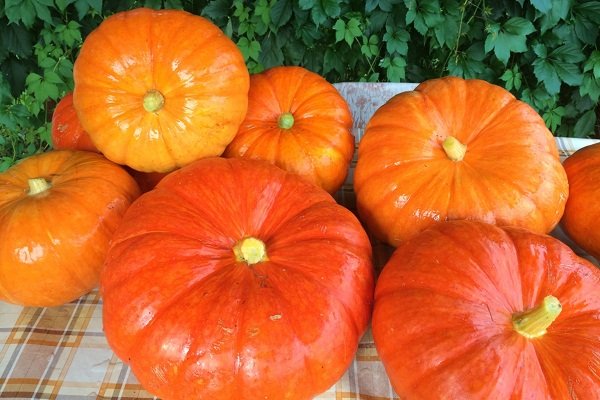
Chit
Pay attention to such features:
- The size. Rather small fruits, the weight of which does not exceed 3 kg.
- Bush. Medium in size with long spreading lashes and large green leaves.
- Maturing period. The baby reaches maturity in 115 days.
- Fruit. Rounded, neat, segmented. The outer color is greenish gray. At full maturity, the skin is very dense.
- Pulp. Bright, orange. Has excellent taste. Due to the sugar content, it can be used to make jam.

big max
What you need to know:
- The size. In good conditions, the mass of fruits reaches 20 kg, but on average, you can grow a pumpkin weighing up to 10 kg.
- Bush. The plant has a high weaving. The leaves are large, light green.
- Maturing period. You can collect fruits 130 days after planting.
- Fruit. The shape is round, without brightly defined segments. The skin has an orange color, in some places diluted with cream-colored spots.
- Pulp. Bright orange color. It has few dry substances, it is dense and sweetish.
- Productivity. Quite high. You can collect about 700 centners from 1 hectare.
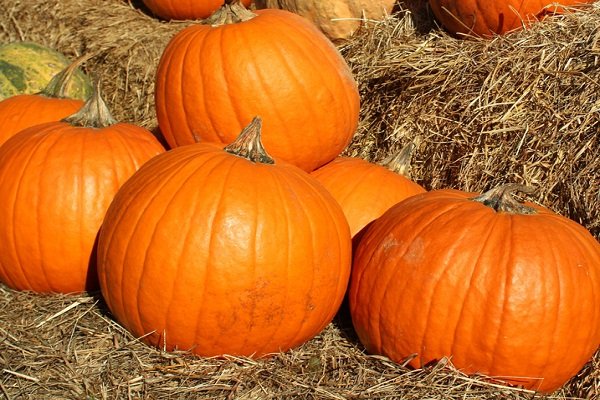
Little Red Riding Hood
Differences of this variety:
- The size. Grow up to 5 kg.
- Bush. Compact, with lashes, the length of which can reach 4 m. The lashes are quite tenacious, completely braiding the proposed support.
- Ripening dates. They ripen quickly, in just 100 days.
- Fruit. Due to its amazing appearance, the variety is often used as an ornamental. The fruits are shaped like a mushroom or a head with a “cap” put on it. Because of this, the color of the skin is also different. The bottom of the pumpkin is light, and the top is bright orange.
- Pulp. Orange. Has a good taste. It can be eaten in cooked dishes or raw.
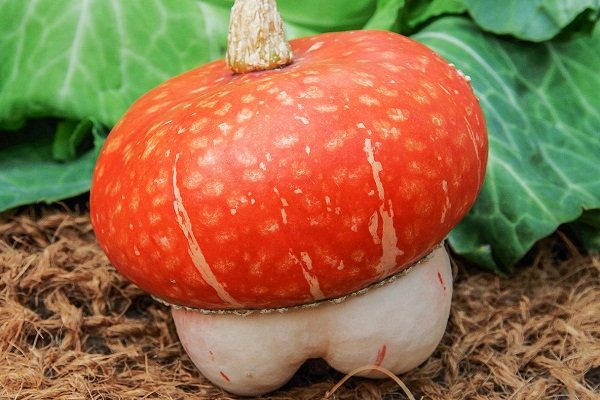
Russian woman
What is interesting in the variety:
- The size. It can reach 4 kg, but more often they collect fruits weighing no more than 2 kg.
- Bush. Compact, with small neat lashes.
- Maturing period. Early maturity. You can collect fruits already 100 days after planting.
- Fruit. The shape is widened at the top and elongated closer to the bottom. The color of the skin is bright, orange with barely noticeable furrows.
- Pulp. Orange, dense, pleasant to the taste. It is used for cooking various dishes and fresh consumption.

You can see the fruits of the Rossiyanka variety and find out its main features while watching the video presented:
Sweet chestnut
Known facts about the variety:
- The size. Very small pumpkins, weighing less than 1 kg.
- Fruit. The skin is green with whitish spots.
- Ripening dates. Refers to early varieties. The growing season lasts from April to August or from May to September.
- Pulp. Yellowish, has a smell of chestnut. Tastes juicy, sweet.
- Storage conditions. Fruit keeping quality is rated as good.
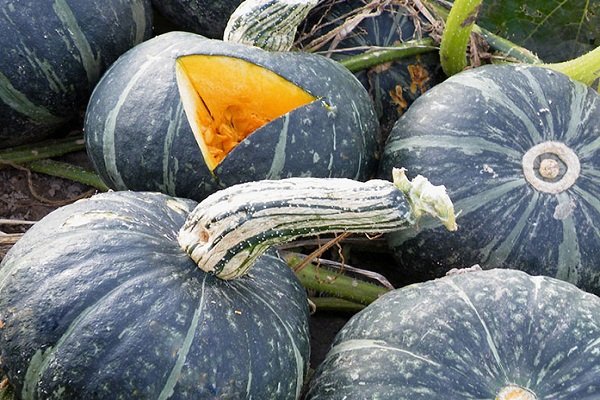
Atlas
Variety information:
- The size. Pumpkins usually have a weight of about 10 kg, but under especially favorable conditions, it can reach 70 kg.
- Bush. The plant has only 1 main lash, it belongs to the weakly climbing ones.
- Maturing period. Atlas matures long enough. The crop can be harvested approximately 140 days after planting.
- Fruit. They have a rounded oval shape. The skin is orange and smooth.
- Pulp. Golden orange color. Dense, slightly oily, sweetish.
- Productivity. During the season, you can collect about 240 centners of pumpkin from 1 hectare.

Donut
Main features:
- The size. The weight of a pumpkin is about 5 kg, but sometimes the fruits can reach 10 kg.
- Bush. Plants have very long lashes, they can grow up to 10 m.
- Maturing period. The fruits reach full maturity in 110 days.
- Fruit. Rounded. The skin is greenish gray.
- Pulp. Orange. Juicy in taste.

Corcus
What is interesting in the variety:
- The size. Weight reaches 5 kg.
- Bush. Plants have 1 long lash and several short ones. The sheets are medium in size.
- Maturing period. It takes 110 days to reach full ripeness.
- Fruit. Round and neat in shape with softly pronounced segments. The skin is dark green in color.
- Pulp. Yellowish color. Dense in structure, sweet in taste.
- Productivity. Average – from 1 hectare you can collect about 200 kg.
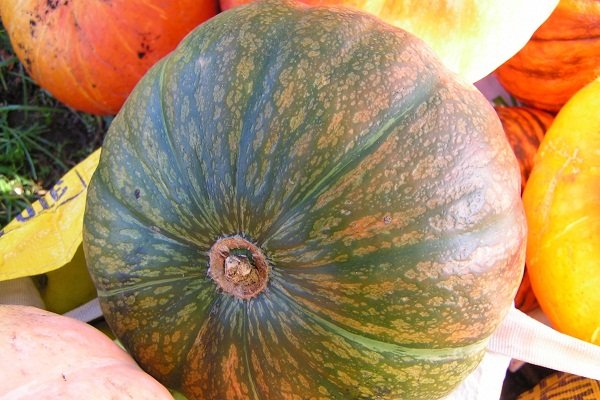
Azure
The characteristics are:
- The size. Reaches 6 kg of weight.
- Bush. With 1 main whip, reaching 7 m, and many smaller ones.
- Maturing period. Ripens, on average, in 115 days.
- Fruit. They have a rounded, slightly flattened shape. The skin is wrinkled, gray-green in color.
- Pulp. Bright orange color. Dense and very juicy, sweetish.
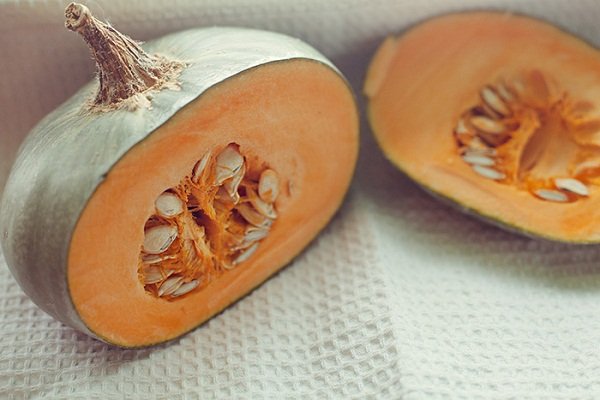
Reviews
To learn more about large-fruited pumpkin and its varieties, reviews of people who have already grown this type of crop will help:
Nina, 48 years old. For several years I have been growing pumpkins of large-fruited varieties. I especially like Titan and Little Red Riding Hood. The first one I chose because of its large size, it is great for livestock feed. And Little Red Riding Hood is not only very tasty and juicy – unusual pumpkins are the decoration of my site. Irina, 53 years old. Recently I started growing large-fruited pumpkins of the Zorka variety. The fruits are very tasty and juicy. I love baking pumpkin pies and making jam. Next year I want to plant the Candy variety. My neighbor praised their sweetness very much. Galina, 61 years old. I grow pumpkins Malyshka and Rossiyanka on my plot. The fruits look very nice and neat. I usually cook porridge and jams from them, and my son likes to eat fresh.
Large-fruited pumpkin is grown all over the world. Varieties are valued for their large size and good taste, presentation and resistance to transportation. It is easy to grow a large-fruited pumpkin on your site if you follow all the conditions of planting and care.
